Indonesia is known as a country where ethnic groups with their own cultures, ways of life, and various languages live. How many languages do you think exist? Two, three, five? You guessed wrong!
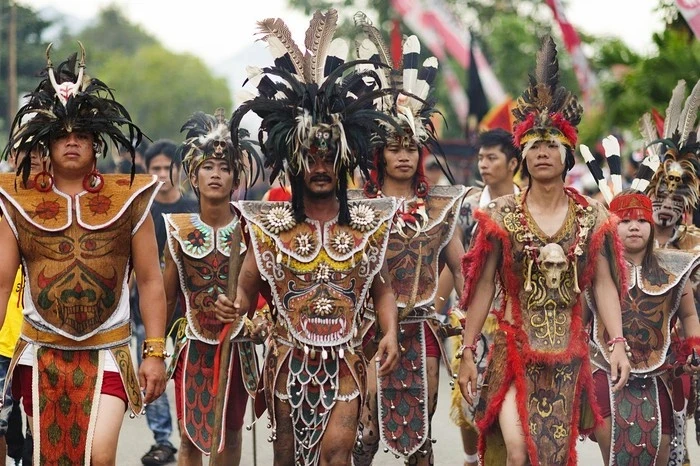
According to the Ministry of Education and Culture of Indonesia, the number of regional languages in the country is 718. And some researchers believe that there are 733 regional languages in Indonesia. 90 percent of them are spread in eastern Indonesia, Papua, and Maluku. Moreover, not all languages in this part of the country are even registered. Indonesia is the second country in the world after Papua New Guinea with the largest number of regional languages. But are all regional languages viable?
Research has shown that some languages have a critical status and are at risk of extinction. The head of the Language Development Agency, E. Aminudin Aziz, stated that if traditions are not protected in families and dialects are not preserved from generation to generation, this can lead to the disappearance of the native language. But most languages have survived.
Types of regional languages
According to new data, there are 652 additional regional languages (excluding dialects) identified and confirmed in different parts of the country. The number of regional languages in Indonesia was obtained based on observations conducted in 2452 regions. Several languages exist only in memories.
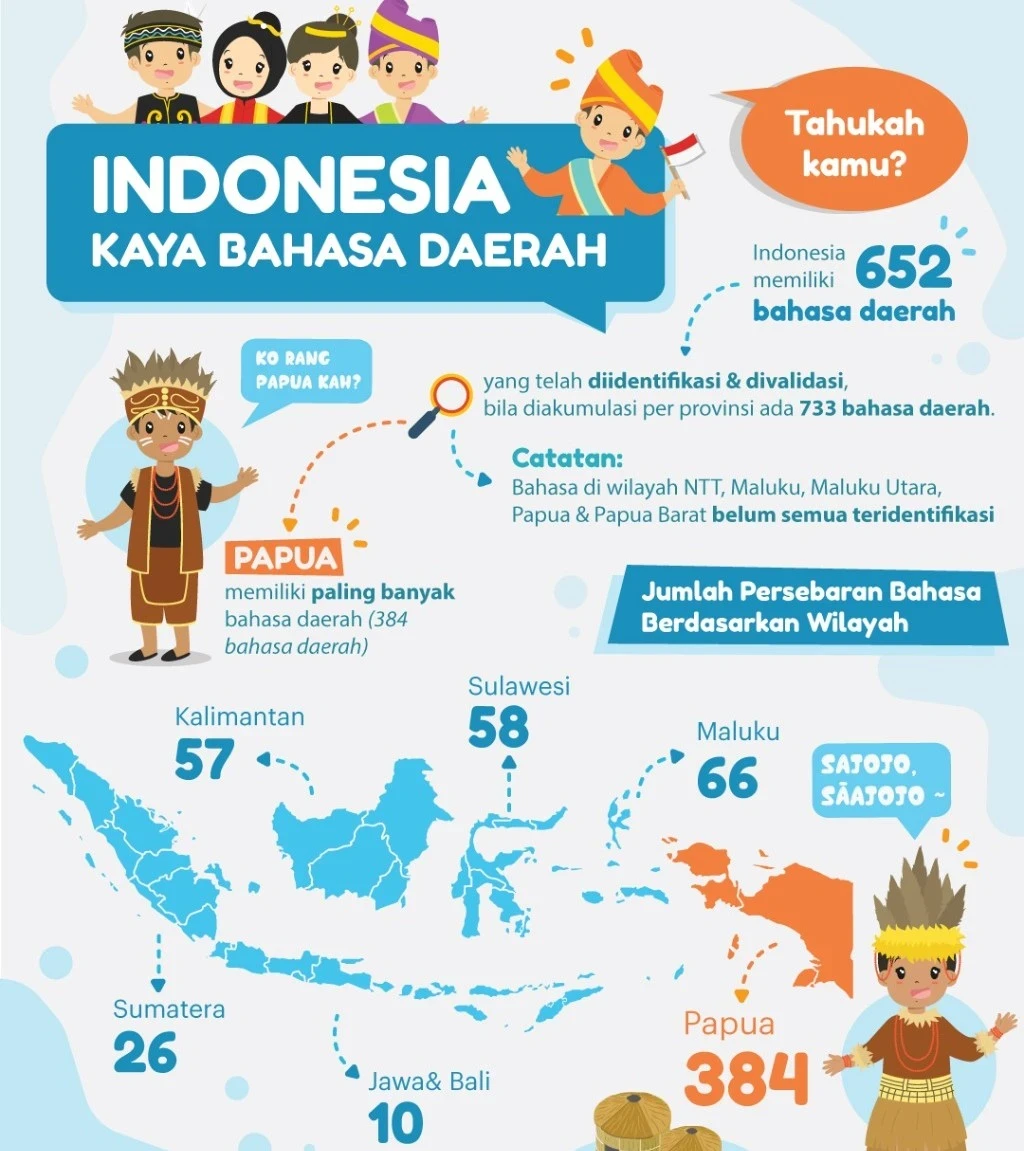
650 are regional languages, while the remaining 2 are registered as immigrant languages, namely DKI Jakarta Mandarin and Ampenan Mandarin.
The most widely spoken languages in Indonesia
In different regions of Sumatra, the following languages are spoken: Acehnese, Dayak, Sigulai, Batak, Bayo, Javanese, Minangkabau, Malay, Nias, Bugis, Ogan, Pedamaran, Komering, Lematang, Kayu Agung, Banjar, Mentawai, Minangkabau, Sundanese, and Balinese.
In the provinces of Bengkulu, Javanese, Sundanese, and Bengkulu languages are spoken. In Riau, Batak and Malay (Indonesian) are spoken. In Jambi, Javanese, Malay, and several other dialects are spoken. In Lampung, Javanese, Balinese, and Sundanese are more commonly used.
On the island of Java, in the province of Banten, Javanese, Lampung, and Sundanese languages are spoken. In the capital of Indonesia, Jakarta, Bugis, DKI Mandarin, Malay, and Sundanese are spoken. In West Java, the capital of Bandung, East Java, the capital of Surabaya, and Central Java, the capital of Semarang, Sundanese, Javanese, Badjao, Balinese, Bugis, Madurese, and Malay are spoken. In Yogyakarta, Javanese and Indonesian are more commonly used.
Official language of Indonesia
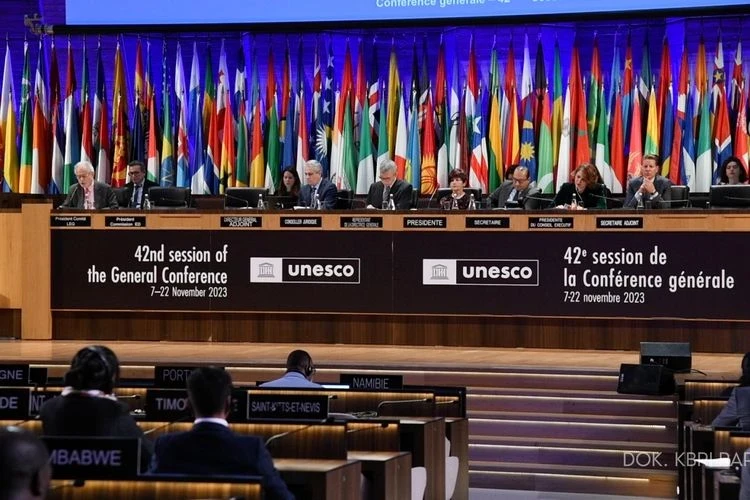
The UNESCO agency for education, science, and culture adopted a resolution, and the Indonesian language was recognized as one of UNESCO's official languages on November 20, 2023. This decision made the Indonesian language the 10th official language recognized by the UNESCO General Assembly. Nine out of the ten recognized languages are English, Arabic, Chinese, French, Spanish, Russian, Hindi, Italian, and Portuguese.
The Indonesian language is the official language of Indonesia because, firstly, it is a symbol of national pride, reflecting the social and cultural values that underlie the patriotism of the people. Secondly, it serves as a symbol of the local people's identity.
It is still spoken in Southeast Asia: in Malaysia, Singapore, and Brunei. Outside Southeast Asia, there are small Indonesian communities in the Netherlands and Suriname. Therefore, although Indonesian is not the official language in these countries, it is still used among the population.
Where did the Indonesian language come from?
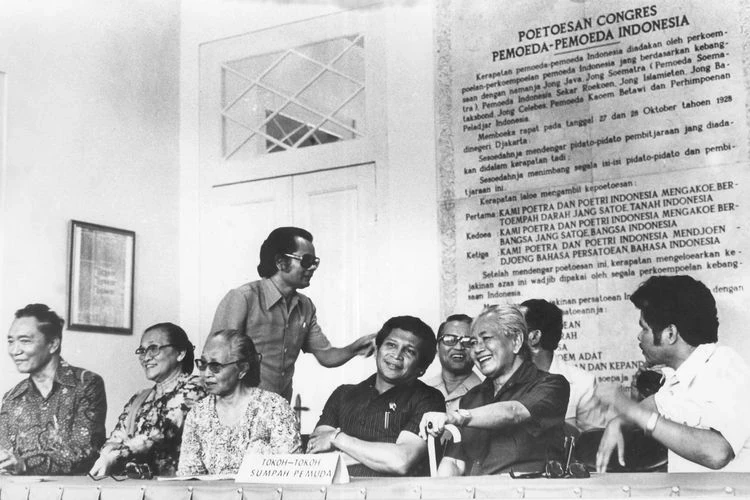
The birth of the standard Indonesian language is from Malay, which came from the Riau archipelago, and the origin of Jakarta's slang is Betawi. The Indonesian language became a variety of the Malay language of the Austronesian family, which itself is a derivative branch of the Malay-Polynesian generation. The fact that the Indonesian language really originated from Malay was confirmed based on the Resolution of the Second Congress of the Indonesian Language in 1954 in Medan.
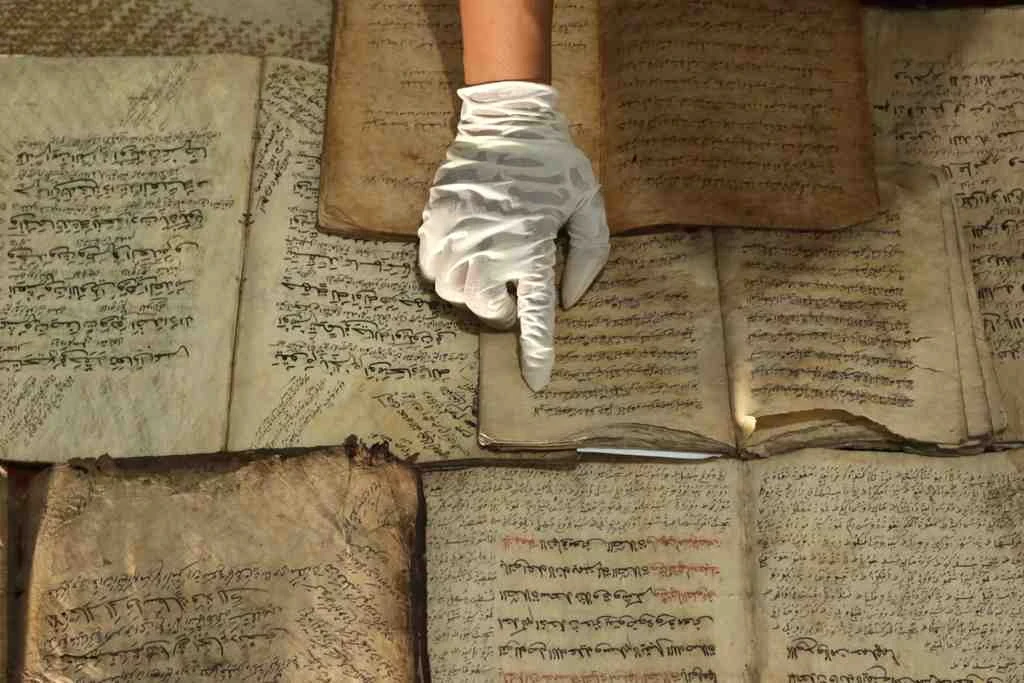
During the Nusantara kingdom, two types of Malay were used: market Malay and high Malay. Market (pasar) Malay is a language that is easily understood and expressed among traders and the common people. This type of language is tolerant of language errors and easily absorbs other terms from various languages used by its users. In the course of its development, this language gradually changed due to its use as a working language in the early 20th century.
Indonesian is characterized by linguistic diversity. Several other local languages have influenced its lexicon: Javanese, Minangkabau, Bugis, Makassar. There are also many borrowed words from European languages, especially Dutch, Portuguese, Spanish, and English. There are also words derived from Sanskrit, Chinese, and Arabic.
The merger of languages was also influenced by factors such as trade and religious activities, existing since ancient times in the Indonesian archipelago.
How did the name "Indonesian" come about?
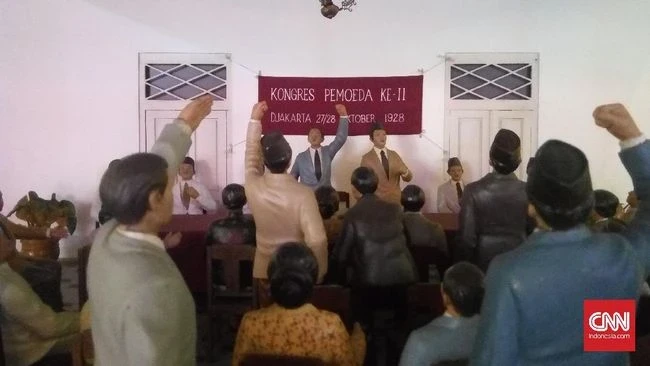
There are people who think that the word "Indonesian" can be omitted and it is enough to call it "bahasa," considering it as a name. However, the word "bahasa" only means language. The term "bahasa Indonesia" is used to refer to the national language of Indonesia. The Indonesian language was officially declared the language of unity of the Indonesian people on October 28, 1928, coinciding with the Youth Pledge.
At this important youth congress, the "Youth Pledge" was announced to name the language Indonesian, thus avoiding the impression of "language domination" in case of using the word "Malay." The "Youth Pledge" is a significant milestone in the history of the Indonesian independence movement. It was decided to show the difference between the modern Indonesian language and the Malay variant used in Riau and on the Malay Peninsula. The pledge became a unifying spirit of the Indonesian state. A museum dedicated to this youth congress was created to preserve the history of the struggle for independence and love for the Indonesian homeland, nation, and language.
And to this day, the Indonesian language is a living language that continues to produce new words through both creation and the mixing of regional and foreign languages. It has brought together people across 17,000 islands, 350 tribes, and 750 regional languages.
The phonology and grammar of Indonesian are relatively simple. According to some researchers, the basics necessary for basic communication can be learned in just a few weeks.
Native Language in Bali
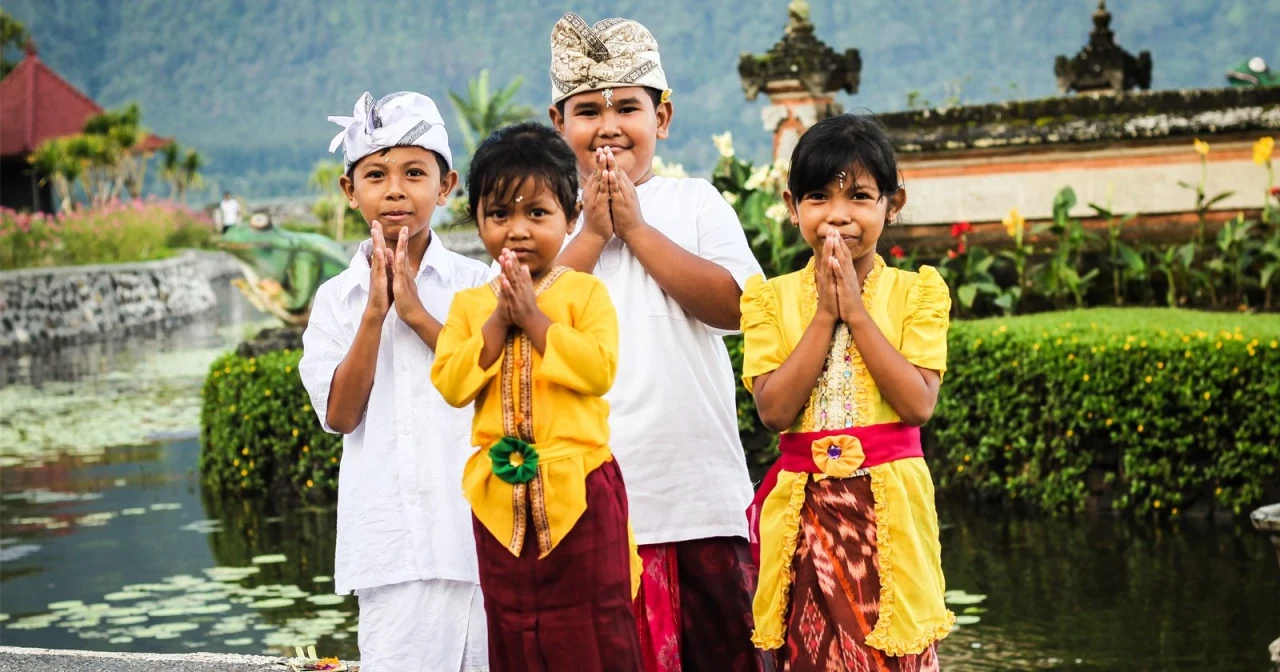
The language in Bali (Bhāṣā Bali) belongs to the Malay-Polynesian group, spoken mainly on the island of Bali, as well as on Nusa Penida, western Lombok, eastern Java, South Sumatra, and Sulawesi. Most Balinese speakers can also communicate in Indonesian.
The Balinese language has its levels of usage, such as Bali Alus, Bali Madya, and Bali Kasar. This occurred due to the influence of the Javanese language on Bali from the time of the Majapahit Hindu-Buddhist kingdom, to the era of Islamic Mataram, but it never conquered Bali.
Bali alus, or "smooth," is used for official meetings, traditional celebrations, and communication between lower and upper castes. Bali madya, or "middle," is used in communication with officials and their subordinates. Bali kasar, or "rough," is applied to people of lower class, for example, between nobles and their courtiers. (By the way, in Javanese language, there are also levels (Krama, Ngoko), similar to Balinese. The first type of Javanese is used in communication with elderly people, and the second one is for their own generation, among peers).
The Balinese language is mainly spoken in the vicinity of the city of Mataram on Lombok, and on the island of Java in several villages in the Banyuwangi region. According to the 2000 census, about 3.3 million people spoke the native language, but in 2011, no more than 1 million did.
This is because people in urban areas teach their children only Indonesian or English, and the Balinese language has disappeared from the mass media altogether. The written form of the Balinese language becomes increasingly alien to its speakers, but most Balinese still use their native language, but only as a means of oral communication in everyday conversations. And still, it is not purely Balinese but mixed with Indonesian.
However, in resettlement areas outside the island of Bali, the Balinese language is widely used, which, according to the natives, plays an important role in the language heritage.
Examples of differences in the most commonly used languages
It is known how to say "thank you" in Indonesian – terima kasih. And in Balinese – matur suksma, in Javanese – matur suwun or matur nuwun. But among Javanese, matur nuwun is more commonly used, which means a sense of gratitude with respect and appreciation, while suwun means "thank you" with a hint of request.
In response to "thank you," the word "you're welcome" in Indonesian is sama-sama, in Balinese – suksma mewali, in Javanese – sami-sami.
If you ever meet centenarians in Bali, try saying these couple of words "thank you, you're welcome" in Balinese, they will surely appreciate that the language has not yet vanished.
You can add one right now!